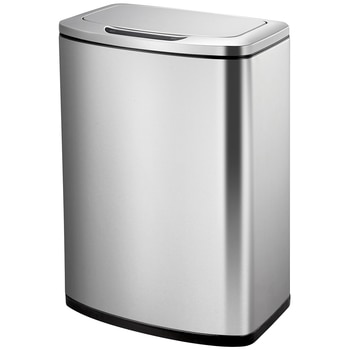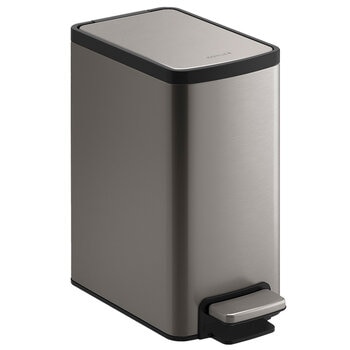Learn how to integrate small changes that will make a big difference.
Downsizing, upcycling, greening your practices: we’re all coming to realise how important it is to protect the environment, and prevention is definitely better than cure. Households are the largest contributors to Australia’s plastic and organic waste, so recycling is one way we can all reduce our contribution to landfill.
Most of us could recycle a little more of our household waste, says Ryan Collins, Recycling Programs Manager at Planet Ark. “We’re one of the world leaders in recycling newspapers and our paper and cardboard recycling rate is quite high. We’re also pretty good at recycling aluminium cans, but we could do better.”
Points to improve
Some Australians put recyclables in a plastic bag. While you might think that makes things easier, items inside a plastic bag don’t actually get recycled because it’s too hard to sort them out. “And the plastic bags get caught up in recycling machinery, so stuff inside plastic bags doesn’t get recycled no matter what is in it,” Collins says.
Another commonly overlooked step is having a recycling bin in the bathroom. “You can recycle deodorant cans, shaving cream cans, shampoo and conditioner bottles and cardboard toilet paper rolls,” he says. We use around 250 million aerosols every year—so that’s a lot of steel and aluminium going into landfill.
Keep in mind that soft or ‘scrunchable’ plastics such as bread wrappers, frozen food bags and chip packets can’t be put in recycling bins. Tubes and broken glass must also be thrown in the garbage.
When to go the extra mile
It’s also important to know which items you can’t put in your regular, kerbside recycling bin and need to be recycled separately.
A big one is batteries. When they go to landfill, batteries leak metals that pollute soil and groundwater. So, instead of throwing them into the rubbish, find your nearest battery recycling program at recyclingnearyou.com.au/batteries.
Electronic or ‘e-waste’ is another major issue that continues to grow. Globally we produce more than 50 million tonnes of e-waste every year and only a small amount of that is recycled. An easy and accessible way to recycle old mobile phones, mobile batteries and chargers is through the MobileMuster program—visit mobilemuster.com.au for details. Printer cartridges are also considered e-waste, and can be recycled through the Cartridges 4 Planet Ark program, which results in zero waste to landfill.
It doesn’t stop at recycling
As necessary as it is to be vigilant about recycling your waste, it’s equally as important to close the loop by buying recycled. “Don’t forget to buy things that have recycled content,” Collins says. “Choose recycled paper for your printer, use recycled toilet paper and use recycled wood for DIY projects at home.”
And don’t underestimate the difference your recycling efforts make. “Recycling recovers a resource that would otherwise go to landfill but you also save on the energy that goes into extracting virgin materials,” he says. “For example, it takes 95 per cent less energy to make an aluminium can from recycled aluminium.” Making cardboard products using recycled material uses up to 99 per cent less water and up to 50 per cent less energy, too.
How Costco recycles
In line with its lean, streamlined approach to all of its business operations, Costco is committed to protecting the environment. One obvious area is packaging. Costco has signed the Australian Packaging Covenant aimed at using smarter packaging, creating less waste and contributing to a cleaner Australia.
To help achieve this, Costco sells larger, bulk pack sizes that use less packaging, we recycle cardboard, paper, plastic film, toner cartridges and tyres, and we don’t use plastic bags at the checkouts.
On top of this, the business aims to work with vendors who share similar values. “Every contractor who works with us produces a waste management plan as part of their construction environmental management plan,” explains Tim Hill, Costco’s Director of Real Estate & Construction, “so they have to demonstrate how they are minimising waste and how they can recycle materials such as steel, concrete and timber.”
Costco’s warehouses are insulated above and beyond Australian Building Code requirements. “We use double dome and triple dome skylights to allow natural light in and to reduce energy usage and heat gain,” Hill explains. “We also use ‘daylight harvesting’ using a sensor that sits underneath the skylights to measure the amount of sunlight coming in. When we have enough light coming in, we switch off as many lights as we can.”
Costco also uses a captive heat system that takes heat produced by refrigeration systems and uses it to heat hot water on site and to run refrigeration defrost cycles in store. New warehouses are increasing the amount of energy efficient LED lighting in store.
Originally published in The Costco Connection, Spring 2015. Pick up the latest copy at your local warehouse or read it online.





